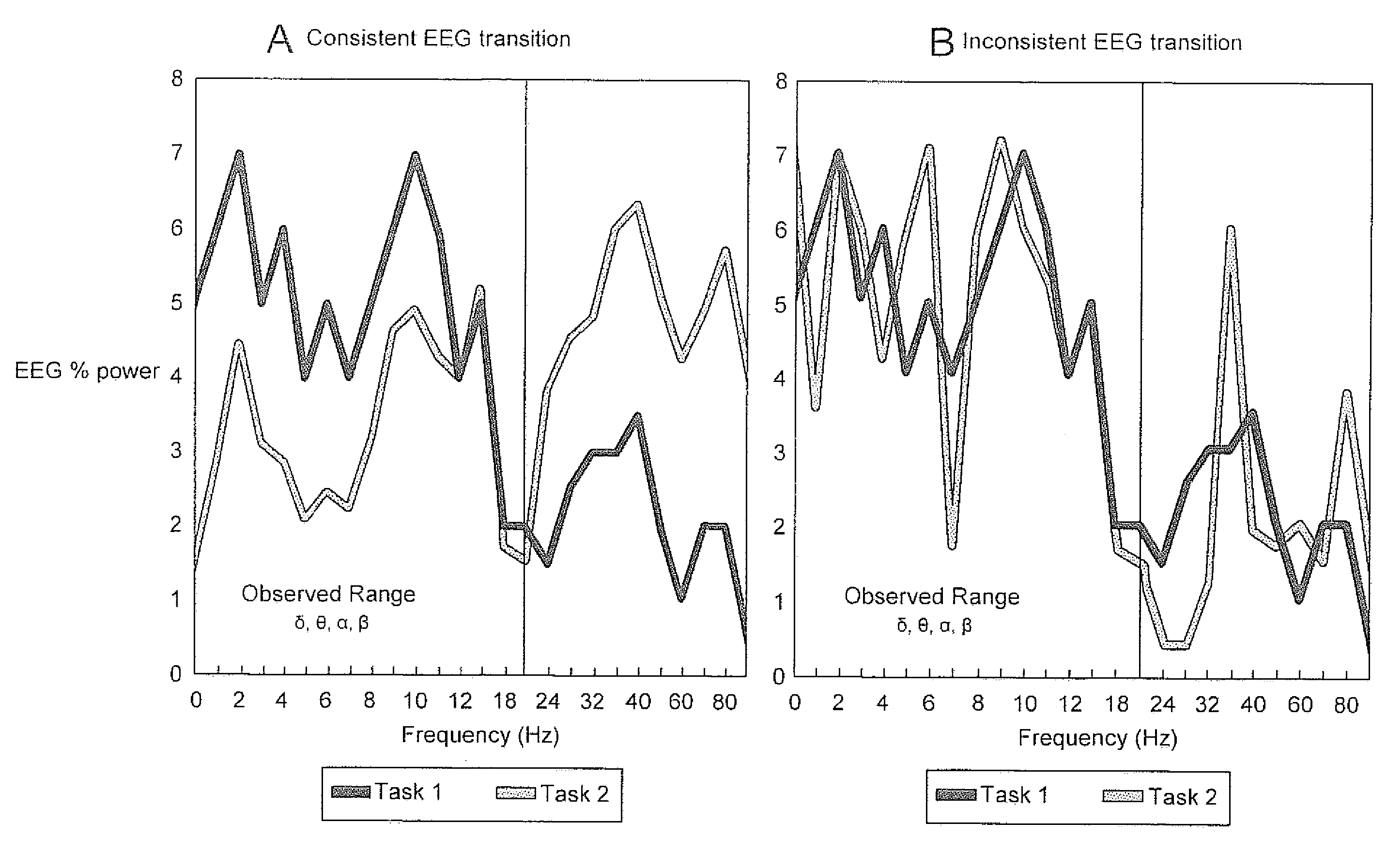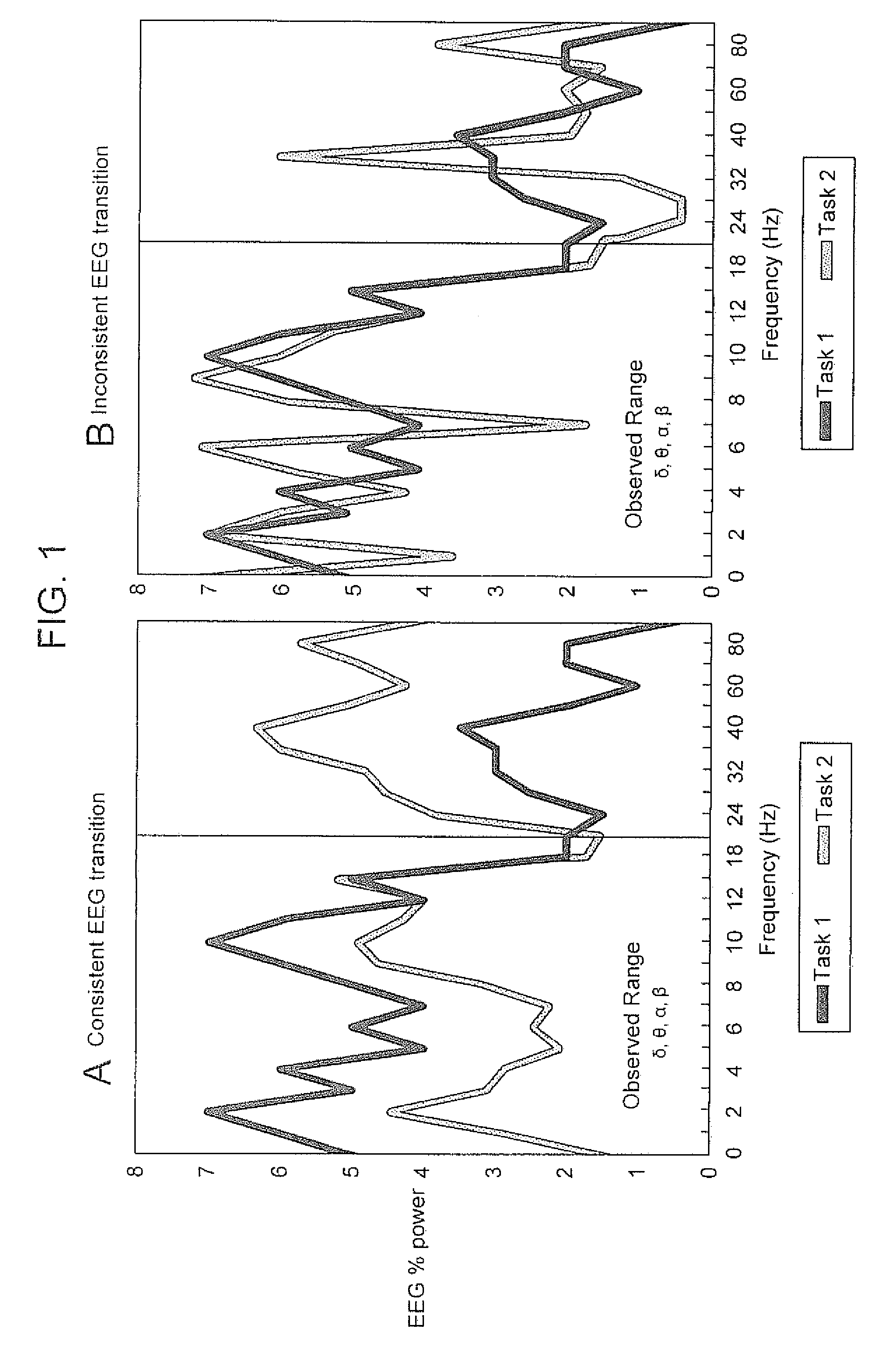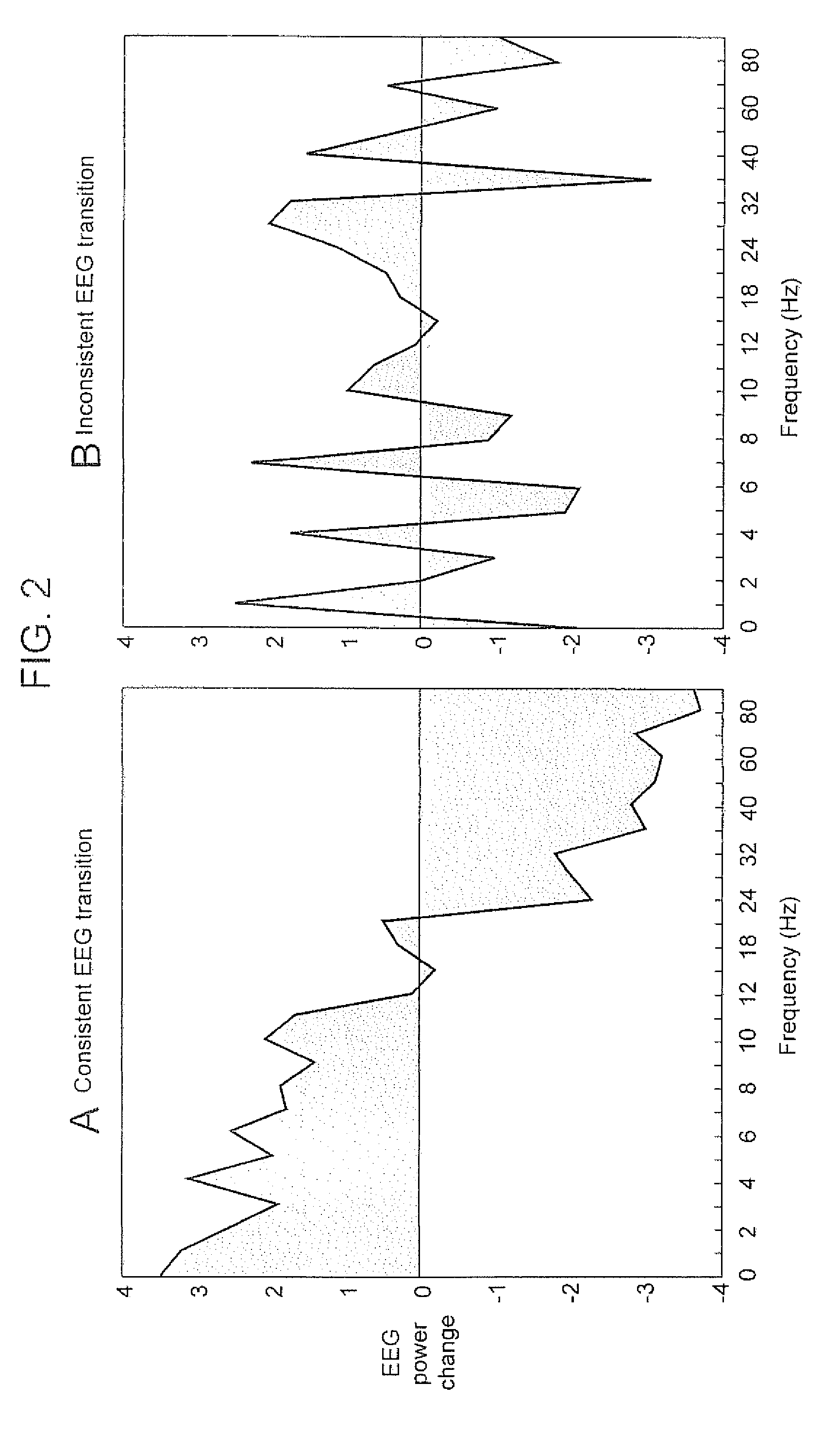Method, Apparatus and Computer Program Product For Assessment of Attentional Impairments
a technology of attentional impairment and computer program, applied in the field of assessment of individuals with attentional impairment, can solve the problems of many negative consequences, no such procedure or set of standards to employ to quantify such impairment, and the commonity of patients' cognitive abnormalities
- Summary
- Abstract
- Description
- Claims
- Application Information
AI Technical Summary
Benefits of technology
Problems solved by technology
Method used
Image
Examples
Embodiment Construction
[0042]The present invention is based on research conducted by the inventors that focused on ADHD in children and the EEG Consistency Index (CI)—a measure based on subjects' EEG shift when going from one cognitive task to another. Cumulatively, the inventors' studies demonstrated that: i) the CI discriminates, with almost no overlap, ADHD male subjects from controls; ii) the CI correlates significantly with psychometric measures of ADHD, and iii) the CI is reliable over time and is positively influenced by Ritalin. The inventors have introduced the Consistency Index as a new measure of EEG alterations related to ADHD and in several studies showed that, on the same data, it works better than the previously known measures. One reason for that is that the Consistency Index is computed on EEG differences between two tasks, and therefore cancels out “noise” inherent in the EEG measurement. The Consistency Index is a measure based on a mathematical model of EEG changes dur...
PUM
 Login to View More
Login to View More Abstract
Description
Claims
Application Information
 Login to View More
Login to View More - R&D
- Intellectual Property
- Life Sciences
- Materials
- Tech Scout
- Unparalleled Data Quality
- Higher Quality Content
- 60% Fewer Hallucinations
Browse by: Latest US Patents, China's latest patents, Technical Efficacy Thesaurus, Application Domain, Technology Topic, Popular Technical Reports.
© 2025 PatSnap. All rights reserved.Legal|Privacy policy|Modern Slavery Act Transparency Statement|Sitemap|About US| Contact US: help@patsnap.com



